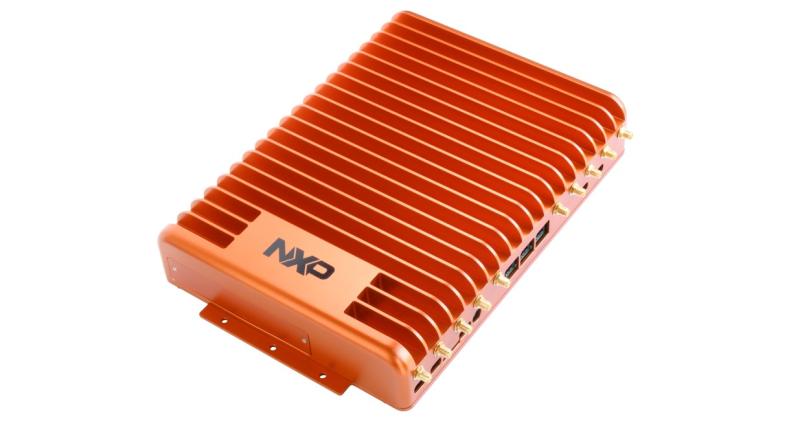NXP Semiconductors N.V. announced OrangeBox, a development platform to help automotive designers accommodate wired and wireless inputs and protect against security vulnerabilities amidst a growing automated vehicle design evolution.
The company described OrangeBox as both a development platform and a modular controller to be installed in a vehicle that provides a unified interface between the vehicle gateway and its wired and wireless technologies. This approach is designed to offer a centralized location for security now disparate across the many network pathways in a vehicle, expanding the cyber-attack surface.
OrangeBox unifies current and emerging external wireless interfaces into a single connectivity domain controller, which in turn connects to the secure vehicle gateway through NXP’s high-speed Ethernet. Doing so allows consistent, updated security protection, which can eventually aid V2X and cloud applications that provide over-the-air updates for future software-defined vehicles, NXP said in a news release.
“We are creating a single pathway for the vehicle to seamlessly connect to the rest of the world,” said Dan Loop, general manager for automotive edge processing at NXP.“ OrangeBox should help reduce costs and streamline development for OEMs and Tier 1 auto tech providers, he added.
The OrangeBox concept follows along the lines of automotive technology architectures announced recently by Nvidia and Qualcomm, among others, where software, networking and hardware work in concert. “Everyone is trying to build out platform approaches rather than trying to sell individual components,” said Jack Gold, an analyst at J. Gold Associates. “If you take a platform approach, then you can build out your software environment and then pick and choose chips to make it work, like Legos…It certainly makes the design burden easier if everything fits into a unified platform.”
Most of OrangeBox components will come from NXP’s broad line of electronics components, but not all.
At the heart of OrangeBox is a central applications processor, the i.MX 8X Lite, which runs a unified Linux-based software platform to manage the wireless connectivity. NXP’s giagabit Ethernet connection to the central vehicle gateway will allow other auto systems to more easily use the integrated wireless connectivity.
NXP plans to demonstrate OrangeBox at CES in January and it will become available sometime in the first half of 2023.
NXP released a blog describing how OrangeBox works.
Today’s vehicles are typically architected to have wireless connections distributed among many ECUs (Electronic Control Units), which can present security risks, NXP explained. “It is almost impossible to apply a consistent security firewall across all the data entering the car to block malware and prevent cyberattacks,” the blog noted.
“Today’s in-vehicle security technologies typically aim to monitor internal buses to detect and isolate malicious code after it enters the car network. That is important but should be complemented by a consistent and state of the art preemptive firewall solution based on a unified connectivity platform that seeks to prevent malware from entering the vehicle in the first place.”
OrangeBox consolidates wireless technologies into a single automotive platform and brings together V2X, Wi-Fi 6, BLE, UWB, AM/FM radio, 4G LTE and 5G cellular modems and GPS into one domain. The cellular modems and GPS receivers are supplied by third parties, but NXP provides other wireless technologies.

While NXP’s OrangeBox technology is contained in an orange module, both Qualcomm and Nvidia have announced SoCs that perform some of the same compute tasks as OrangeBox although not in a larger platform, at least as publicly announced. OrangeBox is focused heavily on integrated wireless connectivity and security while Qualcomm and Nvidia are more heavily focused on compute functions, including AI needed in self-driving vehicles and collection and interpretation of sensor data. Nvidia announced a Drive Thor SoC last month, and shortly after, Qualcomm announced a Snapdragon Ride Flex SoC. Nvidia is projecting Drive Thor will centralize car compute functions for use in cars in 2025.
Gold noted that NXP already has a very large share of the chips market for automotive, meaning OrangeBox is both a proactive technology move and a defensive move “to try and keep the other guys at bay and away from stealing their customers.”
NXP had an 11% share of the $553 billion auto semiconductor market in 2020, ranking second behind Infineon, with 13%, according to Saur Energy International. Renesas was third with 8.5%, followed by Texas Instruments with 8.3% and then STMicroelectronics with 7.5%.
RELATED: Qualcomm unveils Snapdragon Ride Flex SoC at auto investor day